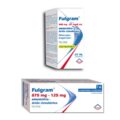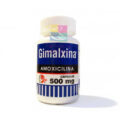Q: A nurse is preparing to administer amoxicillin 30 mg/kg/day divided equally every 12 hr to a toddler who weighs 32 lb. Available is amoxicillin 200 mg/5 mL suspension. How many mL should the nurse administer? (Round the answer to the nearest whole tenth. Use a leading zero if it applies. Do not use a trailing zero).
Answer: 5.6 mL
Explanation
Amoxicillin is an antibiotic. It’s used to treat infections caused by certain types of bacteria. This antibiotic belongs to a specific class of drugs called beta-lactams. Beta-lactam antibiotics such as amoxicillin work by binding proteins and inhibiting certain processes in bacterial cells. This causes the cell walls to break down and destroys the bacteria, a process called bactericidal killing.
In addition to being FDA-approved to treat specific infections, such as pharyngitis and tonsillitis, amoxicillin is commonly prescribed off-label to treat other bacterial infections including Lyme disease, anthrax, chlamydia, dental abscesses, periodontitis, salmonella, and typhoid fever. It’s also given in a single dose to prevent heart infection (endocarditis) for at-risk heart patients undergoing dental procedures. Amoxicillin is also combined with other medications to eradicate Helicobacter pylori, the bacteria responsible for peptic ulcer disease.
For most susceptible infections, an amoxicillin capsule, tablet, chewable tablet, or oral suspension is administered by mouth two or three times a day for several days.
Dosage
The amount of medicine that you take depends on the strength of the medicine. Also, the number of doses you take each day, the time allowed between doses, and the length of time you take the medicine depend on the medical problem for which you are using the medicine.
- For oral dosage forms (capsules, powder for suspension, and tablets):
- For bacterial infections:
- Adults, teenagers, and children weighing 40 kilograms (kg) or more—250 to 500 milligrams (mg) every 8 hours, or 500 to 875 mg every 12 hours.
- Children and infants older than 3 months of age weighing less than 40 kg—Dose is based on body weight and must be determined by your doctor. The usual dose is 20 to 40 milligrams (mg) per kilogram (kg) of body weight per day, divided and given every 8 hours, or 25 to 45 mg per kg of body weight per day, divided and given every 12 hours.
- Infants 3 months of age and younger—Dose is based on body weight and must be determined by your doctor. The usual dose is 30 mg per kg of body weight per day, divided and given every 12 hours.
- For treatment of gonorrhea:
- Adults, teenagers, and children weighing 40 kilograms (kg) or more—3-grams (g) taken as a single dose.
- Children 2 years of age and older weighing less than 40 kg—Dose is based on body weight and must be determined by your doctor. The usual dose is 50 milligrams (mg) per kilogram (kg) of body weight per day, combined with 25 mg per kg of probenecid, taken as a single dose.
- Children younger than 2 years of age—Use is not recommended.
- For treatment of H. pylori infection:
- Adults—
- Dual therapy: 1000 milligrams (mg) of amoxicillin and 30 mg of lansoprazole, each given three times a day (every 8 hours) for 14 days.
- Triple therapy: 1000 mg of amoxicillin, 500 mg of clarithromycin, and 30 mg of lansoprazole, all given two times a day (every 12 hours) for 14 days.
- Children—Use and dose must be determined by your doctor.
- Adults—
- For bacterial infections:






